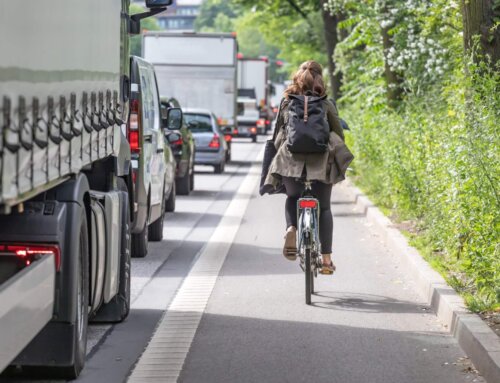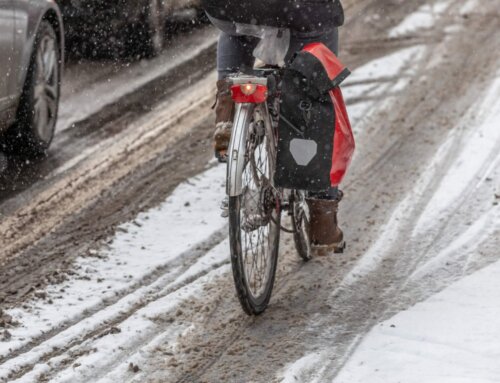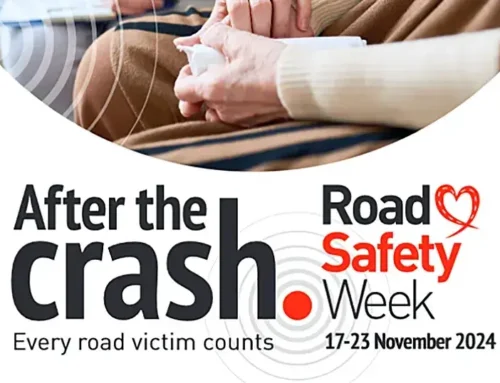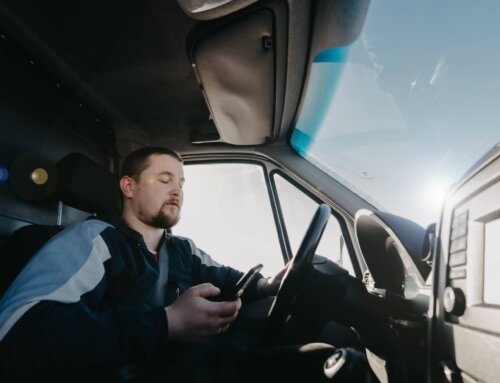Motorcycles don’t occupy much space on the road. However, every time bikers go out on the road, they place a tremendous amount of trust in the state of the nation’s roads. If a surface defect or debris on the road catches a front wheel, there’s scant margin for error.
What should you do if you are injured in a motorcycle accident, where the road conditions have contributed to the crash? Can you bring a motorbike accident claim to obtain compensation for pain and suffering? If so, against whom will they bring the claim?
This guide explains when these claims are likely to succeed, what type of evidence you need, and how you work out compensation. You may want to read this in conjunction with our main Motorcycle Accident Claims webpage.
How road conditions trip riders up
On two wheels, minor defects become significant hazards. The problems we see again and again:
- Potholes, failed patches and sharp-edged cracks that deflect the front wheel or bottom out the forks.
- Loose gravel/chippings after resurfacing or from verges – sudden front-end washouts are common.
- Standing water and blocked gullies – grip falls away on polished surfaces or paint; lines and ironwork can be treacherous when wet.
- Raised or rocking ironwork and abrupt level changes after utility works.
- Temporary works with poor signage, missing ramping or inadequate sweep-offs.
- Resurfacing using a ‘thin surface treatment’ of bituminous solution and silicate grit.
- Pooled water from blocked drains
The legal considerations
Highway authorities (your council for local roads; National Highways for motorways and trunk roads) have a duty to maintain the highway (Highways Act 1980, s.41). There’s also a duty in the winter months to ensure, so far as reasonably practicable, that safe passage isn’t endangered by snow or ice.
However, authorities can defend a claim under section 58 of the Highways Act if they can show they took reasonable care to ensure that the relevant section of the highway was not dangerous at the time in question.
Typically, the authorities do this by proving that they have evidence of inspecting the highways under their control with sufficient frequency, and that they respond and repair within a reasonable timescale. They also ensure they have the paperwork to prove this.
In practice, two questions decide most motorcycle accident cases:
- Was the defect or other hazard dangerous for a motorcyclist?
- Were the authority’s inspections and repair systems reasonable for that class of road, and followed up in a respectable time frame?
That’s where a highly experienced firm of motorcycle accident solicitors makes a huge difference. At Mooneerams, we have been here before, successfully taken on the relevant authorities, and won.
For a broader view on how personal injury claims work, check out our article Understanding the Basics of Personal Injury Law
When do these claims succeed?
Every case turns on its unique facts, but claims often succeed where:
- A known pothole met the council’s “action” criteria, was logged (or should have been on inspection) and wasn’t repaired in time.
- Road works left hazards, e.g. loose chippings without proper sweep-off, raised lips at trench edges, or rocking covers.
- Recurring drainage issues created predictable puddling and loss of skid resistance, yet the underlying fault wasn’t fixed.
- There’s a lack of signage, e.g. warning of the dangers posed by slippery surfaces following road resurfacing.
It’s more difficult to bring a claim where the danger was truly fleeting (e.g., a one-off diesel spill) with no link to roadworks or an other known pattern.
However, even then, it’s advisable to take advice. Each claim really does turn on its own facts. There may be something about the accident that wasn’t noticed in the immediate aftermath of the accident. Still call us.
Evidence that can have a positive impact on your claim
Riders often walk away without recording the scene, then regret it. If you can (or a friend can):
- Photograph the defect from multiple angles with landmarks for context; add a close-up with a ruler/coin for depth/width.
- Show your approach line – camber and crown matter on a bike.
- Note weather/light and whether shadows, pooling or glare concealed the hazard.
- Collect witness details and any helmet-cam footage.
- Report the defect online to the council/National Highways and keep the reference.
- Keep the bike and kit – don’t bin damaged gear.
We are all too aware that in motorcycle accidents, the physical injuries sustained by bikers can often be pretty serious. Post-accident, many motorcyclists are busy being attended to by paramedics. To gather evidence, you may need to rely on friends, family, and the authorities, such as the police, to assist you.
When you are ready, speak to us at Mooneerams.
Should you decide to have us act on your behalf, we will obtain copies of:
- the authority’s inspection and repair logs,
- winter service plans,
- any applicable utility permits, and,
- any other relevant documentation related to your claim.
If needed, we’ll bring in an engineer to assess skid resistance or reinstatement quality (of the area of road in question).
You may find our article ‘What is the Pre-Action Protocol for personal injury claims?’ a useful read at the outset of your claim being taken on by a personal injury solicitor.
“What if I was going a bit quick?” – contributory negligence
If you are partly at fault for an accident, it doesn’t end the claim; however, it can reduce the amount of damages you receive.
Typical arguments levelled at motorcyclists include:
- riding too fast
- late observation: signalling late, manoeuvring late, failing to check mirrors too late.
- Taking an unsuitable line.
When the insurance company for the authority argue contributory negligence against you, the court must ask itself whether your riding materially contributed to how the accident happened, or the severity of the injury you suffered.
If it takes the view that your actions contributed to the accident, there may be a percentage deduction from your compensation; if not, there will be no deduction.
If you’re unsure about what to do, call Mooneerams, and we’ll provide our informal, honest opinion on whether we think you contributed to the outcome of the accident or not.
What can you claim for?
- General damages for pain, suffering and loss of amenity (guided by medical evidence and the Judicial College Guidelines). In other words, compensation for the injuries you suffered and the effect the injuries have had on your daily life.
- Special damages for financial loss: loss of earnings, treatment and rehabilitation, care and assistance, bike/kit repairs or replacement, travel and other expenses.
Where your injuries are severe and likely to have long-term effects, we’ll also explore home adaptations and consider engaging a case manager to oversee all aspects of your care and rehabilitation needs. In appropriate cases, we’ll seek to obtain an order for periodical payments to meet lifelong needs.
For a clear and complete explanation of compensation awards, how they are arrived at and what can be claimed in serious injury cases, see A Guide to Personal Injury Awards and Settlements.
Rehab and interim payments
It’s often said that early rehabilitation can significantly impact outcomes. Where liability is admitted (or the court is satisfied you’re likely to succeed), we’ll apply for interim payments to fund treatment and stabilise your finances while the case runs. Read more here: What is an interim payment in a personal injury claim?
Funding – no small print surprises
We run most road-condition motorcycle claims on a No Win No Fee basis. That means no upfront legal costs and nothing to pay if the claim doesn’t succeed.
Quick answers
Do I have to prove fault?
Yes – like any road traffic claim, you need to show someone else’s negligence caused the accident (or contributed to it) if you are to succeed in a motorcycle accident compensation claim.
Are motorcycle claims treated differently from car claims?
They’re not treated differently in the way the claims process operates. They differ in that some of the hazards bikers face on the highway pose a higher level of danger for motorcyclists than they do for other road users.
Posted in Road Traffic Accidents










